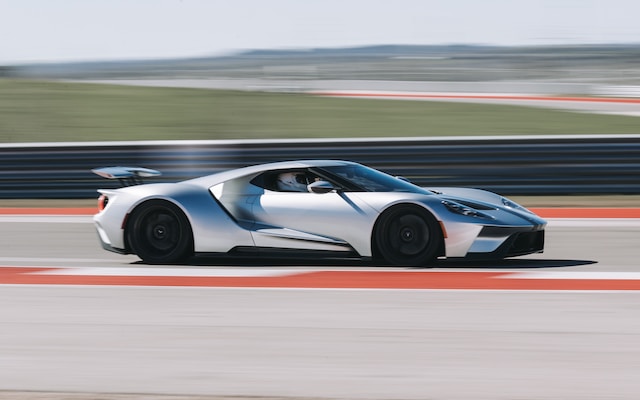
On my way to work this morning, I caught a snippet of a conversation about something called “brake boosting.” It piqued my curiosity since it was a term I’d never encountered before. So, later in the day, I took some time to research to find out what precisely brake boosting entails.
Brake boosting involves rolling a car while pressing the gas pedal and lightly applying the brake. This method enables the vehicle to sustain a steady speed until it accelerates with an extra burst of power. It’s commonly employed in activities like roll racing.
This concept of brake boosting has gained significant popularity within the car enthusiast community, particularly among individuals who engage in street racing. If you’re as intrigued as I was about delving deeper into this subject, read on to discover a comprehensive brake-boosting guide covering everything from the basics to advanced techniques.
A Brake Booster is a mechanical component in a vehicle’s braking system that assists in applying the brakes, making it easier for the driver to press the brake pedal. It works by amplifying the force applied to the pedal.
On the other hand, Brake Boosting, as previously described, is a driving technique where a car’s engine is revved while simultaneously applying the brakes to build up power for a quick start.
What Is Brake Boosting?
Brake boosting is a prominent technique in the automotive world, especially within racing and high-performance driving. As the name implies, its purpose is straightforward yet significant.
At its core, brake boosting entails strategically using the brakes to initiate a controlled surge in the vehicle’s speed. This method involves precise coordination of throttle and brake inputs, allowing the driver to harness the energy stored in the engine for immediate acceleration.
This technique is precious when a swift start is crucial, such as during drag races or overtaking on the track. By strategically applying the brakes while maintaining pressure on the accelerator, the engine is kept in a state of heightened readiness, poised to unleash its power when the brakes are released.
It’s worth noting that while brake boosting can provide an exhilarating performance boost, it should be approached with caution and practiced in a controlled environment. Additionally, it’s essential to be aware of the specific characteristics of your vehicle, as different cars may respond differently to this technique.
In essence, brake boosting is a skill that exemplifies the symbiotic relationship between a skilled driver and a finely tuned machine, demonstrating the art of extracting every ounce of performance from a vehicle.
Brake boosting is a driving technique that simultaneously applies pressure to the brake and gas pedal. This lets the car maintain a consistent rolling speed with the gas pedal pressed down while lightly engaging the brake pedal with the other foot.
It’s essential to distinguish brake boosting from the concept of left-foot braking, which will be explored in greater detail later in this article.
Now, you might wonder why a driver would employ the brake-boosting technique and its purpose. The following section will provide answers to both of these questions.
What Is The Purpose Of Brake Boosting?
Now that you have a fundamental grasp of what brake boosting entails, it’s equally crucial to comprehend why this technique is employed. In the list provided below, you’ll find a concise outline detailing some of the motivations behind the practice of brake boosting:
Purpose of Brake Boosting:
- Speed Enhancement:
- One of the primary objectives of brake boosting is to augment the speed of a vehicle swiftly and effectively. By engaging this technique, drivers can tap into an extra power surge, instrumental in situations where quick acceleration is paramount.
- Racing Applications:
- Brake boosting finds significant utility in racing, where split-second advantages can make all the difference. It enables drivers to gain an edge at the start line, potentially giving them a lead over their competitors.
- Gaining a Tactical Advantage:
- Beyond the racetrack, brake boosting can be a tactical maneuver during various driving scenarios. Whether merging onto a highway or executing a decisive pass, this technique allows drivers to take initiative and seize control of the situation.
Understanding the purpose behind brake boosting provides drivers valuable insight into when and how to employ this technique effectively. When wielded judiciously, it’s a skill that can significantly enhance a vehicle’s performance in critical moments.
Brake boosting primarily serves the purpose of increasing a vehicle’s speed. As mentioned, the driver applies the accelerator and brake to maintain a steady pace, culminating in a significant surge when the accelerator is fully engaged.
This technique is most prevalent in activities like street racing or roll racing. It grants the driver a substantial advantage by enabling them to gain an early lead over competitors. In a race involving three cars, a driver employing brake boosting is virtually guaranteed to pull ahead, often leaving the competition utterly unaware until they find themselves trailing behind.
Given these benefits, it raises an important question: Is brake boosting a safe practice?
Does Brake Boosting Pose a Safety Risk?
Given that we’re discussing brake boosting, particularly in the context of its common usage in street racing, you might be pondering whether this activity carries a significant level of risk.
Brake boosting, like street racing in general, is not advisable on busy roads due to its high potential for danger in many scenarios. While it’s true that this practice isn’t the safest option, there are specific safety measures you can follow for the best possible outcomes should you choose to attempt it yourself.
Brake Boosting Safety Tips:
- Avoid Heavily Populated Areas:
- Never brake boosting on busy roads, including highways with high traffic and pedestrians.
- Practice in Controlled Environments:
- Before attempting it in public, practice the technique in a controlled setting. The last thing you’d want is to lose control of your vehicle in an area with a risk of colliding with someone or something.
- Utilize a Race Track for Practice:
- A race track provides ample space to refine your brake-boosting technique with no other vehicles around.
Brake Boosting vs Left Foot Braking
As mentioned earlier, brake boosting can sometimes be confused with another racing technique called left-foot braking. While they share similar traits, they are fundamentally different practices. Here’s a comparison:
Brake Boosting:
- Uses both gas and brake simultaneously
- Maintains a consistent speed
- Prepare for a surge in speed and power afterward
Left Foot Braking:
- Uses both gas and brake simultaneously
- Intended to slow down the vehicle
- Eventually brings the car to a stop
While both involve using both pedals simultaneously, they yield very different outcomes. Brake boosting aims to prepare for a significant increase in speed and power, while left-foot braking is used for slowing down or coming to a complete stop.
In summary, brake boosting and left-foot braking share a similar process but have distinct results—increasing speed in the former and decelerating in the latter.
Can Brake Boosting Damage Your Car?
Considering what brake boosting entails, why it’s done, and the potential risks, it’s essential to address the possible impact on your vehicle’s condition. Below, we’ll outline the potential drawbacks to this activity in terms of your car’s well-being.
Brake Boosting Damage:
- Wear and Tear to the Braking System
- Potential for Smoking/Fire
Since brake boosting involves brakes, it’s evident that it can also lead to wear and tear on them. More specifically, there’s a possibility of experiencing smoking from your car’s braking system, and in extreme cases, even a fire risk if not exercised with caution.

